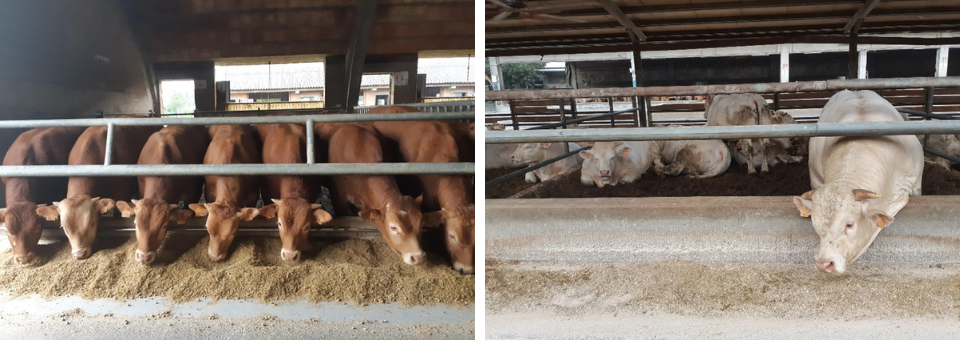
https://ec.europa.eu/eip/agriculture/en/find-connect/projects/bovine-beef-innovation-network-europe
Introduction to the challenge addressed
Cattle reared for beef production in Italy derive from abroad, mostly (over 80%) from France, where animals are of different genetic types with different growth and finishing requirements. The other 20% of animals fattened in Italy can be from Irish, Italian, Austrian, German or Eastern Europe crossbreeds.
The animals finished are then consumed in Italy, the amount of beef sold abroad is really insignificant. Market requirements about carcass conformation and characteristics of beef can be very different between countries, for example in terms on the distribution and amount of fat cover and visible marbling on the meat surface. In Italy these differences are even local, since for example the Centre-South of Italy beef is required to be fatter, and so carcasses are noticeably heavier than those sold in the North.
To better reach the market requirements of beef cattle carcasses, farmers have to adapt their feeding plans according to breed, gender of animals, growth periods and often to clients’ specific requirements. During the growth of beef cattle farmers utilize feeding plans according to the requirements of the animals. Cattle reared in Italy for beef production are mostly from French breeds, and these type of animals are considered late-growth genetic types, as they deposit muscle tissues till 20-24 months and start to deposit fat late. So to obtain a fat deposit earlier farmers have to increase the energy content of diet in the last 2 to 4 months before slaughter.
This means that in the feeding plans, commonly consisting in corn silages, soy or sunflower meals, cereals’ meals, soluble fiber (beetpulps or bran) and straw, during finishing, farmers add more cereals’ meals, add vegetable fats and sometimes decrease the forages.
Description of Innovation
The modifications of diet plans made by farmers, always advised by nutritionists, in order to fulfil the requirements of the market are applied in the last months of fattening (2, 4 months) and are directed to increase the energy and sometimes also at the same time to reduce the roughage, such as corn silage. Here are some examples of modifications according to different type of animals:
- Charolaise, male: increase of 1 kg corn meal
- Charolaise, female: decrease of 1 kg corn silage, increase 2,5 kg of corn meal
- Limousine, female: no use of corn meal in growth but inclusion of 2 kg in fattening phase
- Italian crossbreds, female: increase of 1 kg corn meal
- Italian crossbreds, male: increase of 1 kg corn meal
The remaining part of the diet usually doesn’t change, and it’s made for most of farmers of straw, a source of protein (soy meal or industrial mix), a source of soluble fiber (bran, beet pulps…) and vitamin and minerals supplementation
Impact on farm performance
The adaptation to the animals feeding plans that farmers have to apply is a forced practice they have to respect, to obtain the best performance from their production. The practice involves the intervention of an expert in nutrition to adapt the rations to animals and periods, and also involves a certain amount of hours of work, since not all animals are at the same growth level at the same time, and there is the need to prepare different rations (at least 2) per day.
The results that can be measured by the farmer in farm are the conformation and the weight of the animals; the final results are in the hands of the buyer, who is the one to check on the final quality of carcass (conformation and fat deposit). The success of the work of the farmer is the continuity of buying agreements with market operators.
Audio-visual material

The most diffused gentic type in Italian Beef Farms, Limousine and Charolaise
Farmer comment (for Good Practices)
Changing the feeding plan to improve the characteristics of the animal at time of slaughter is a practice that many of us farmers have to apply, especially those with beef bulls or with breeds that have difficulty to deposit fat in their body. It’s challenging for it takes more work (more than one diet per diet according to different groups of animals) and expensive, for energy to deposit fat comes from expensive ingredients (cereals or fatty supplements), but it’s the only way to meet market success